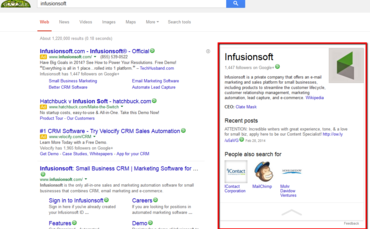Google and Bing have been tinkering with their search engine results pages (SERPs) since the dawn of, well…search engines. It is nothing new. In the here and now, the testing includes product listing ads (PLAs), knowledge graphs, and in the case of Bing, a heavy use of suggested searches. What does this mean for pay-per-click (PPC) advertisers? Less space for text ad units and generally reduced ad visibility.
When I set out to write this article, I was solely focused on Bing. Over the past few months I had anecdotally noticed a trend: frequent search results with only four or five ads and the bulk of average positions in the one-to-four range in Bing Ads. What about ads in position five or lower on the page? Does that mean I can only rank in positions one to four and nowhere else?
In preparing stats and other data points for the article, I slowly came to realize what I already knew. This problem isn’t specific to Bing. It is the same for Google as well. To understand the issue, you have to understand how crowded the SERPs have become. Innovations like knowledge graphs, product listing ads, etc. are stretching the vision of what a search engine really is.
Knowledge Graph

PLAs

Bing Suggested Queries

The Data
The second piece of evidence to review is where keywords are actually ranking. Again, I initially only reviewed Bing Ads. I chose five accounts with a strong Bing Ads presence. These accounts spanned multiple verticals, lead gen, and e-commerce. I pulled keyword level average ad position over the last 30 days.
With nearly 15,000 keywords in the pool of data (representing more than $50,000 in ad spend) I found that 86 percent accrued impressions in positions one through four. This, of course, leaves only 14 percent ranking position five or lower on the page. See the breakdown here:

What about just a single account? Even better, the account that made me stand up and take notice of this data in the first place? The comparison was even clearer. Keywords received impressions 93 percent of the time in positions one through four and 7 percent lower on the page. See the breakdown here:

Now this is where crowded SERPs and limited ad inventory becomes not just a Bing Ads problem, but a search engine industry problem. When pulling the same data set for Google AdWords for the same client, the breakdown was identical! Keywords received impressions 93 percent of the time in positions one through four. See the breakdown here:

What Does It All Mean?
At first blush it would be easy to explain this away as a vertical-specific issue or a difference between lead gen vs. e-commerce. My data says otherwise. Is this simply a circumstance of an active phase of testing for both Google and Bing? Possibly. More than likely, this is a glimpse into the future for PPC advertisers. As the search engines innovate, the SERPs will continue to be crowded, thus limiting the potential for a large number of text ads to display.
What does this mean? If we are all competing for top spots on a larger scale (because let’s be honest, many of you are competing for the top spots already), it is possible for CPCs to rise at a faster pace. In my opinion, the biggest risk is loss of long tail query exposure from broad or phrase matched keywords. If the engines are only showing the four or five most relevant ads, on the surface it would appear to be the best decision for the end user. However, those long tail queries are a big part of many PPC campaigns’ success. Food for thought.
Have you noticed the same trends in your accounts? What impact do you feel this will have on the PPC landscape in 2014 and beyond?












